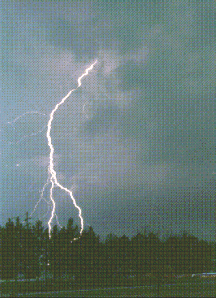Atlanta/Peachtree City, GA
Weather Forecast Office

Lightning will normally strike the highest object in an area. The highest object may be a tall tree, a boat on a lake, an antenna or a person standing in an open field. Lightning is also responsible for fires which have resulted in several hundred million dollars a year in damage and the loss of 2 million acres of forest.
Lightning is the one of the leading causes of weather-related deaths during an average year. Most casualties occur during the summer months in the afternoon and early evening. Most lightning deaths and injuries occur when people are caught outdoors. A persons chance of being struck by lightning is approximately 1 in 600,000, but is greatly reduced by following safety precautions.
Current Hazards
Outlooks
Georgia Road Conditions
Nationwide
Local Storm Reports
Local
Submit Storm Report
Forecasts
Fire Weather
Forecast Discussion
Incident Support
Tropical Weather
Local
Computer Models
Graphical
Aviation Weather
Activity Planner
Recreational Forecast
Current Weather
Rivers/Lakes
Satellite Images
Observations
Maps
Radar Imagery
Peachtree City
Regional Loop
Nationwide
Warner Robins
US Dept of Commerce
National Oceanic and Atmospheric Administration
National Weather Service
Atlanta/Peachtree City, GA
4 Falcon Drive
Peachtree City, GA 30269
770.486.1133
Comments? Questions? Please Contact Us.

